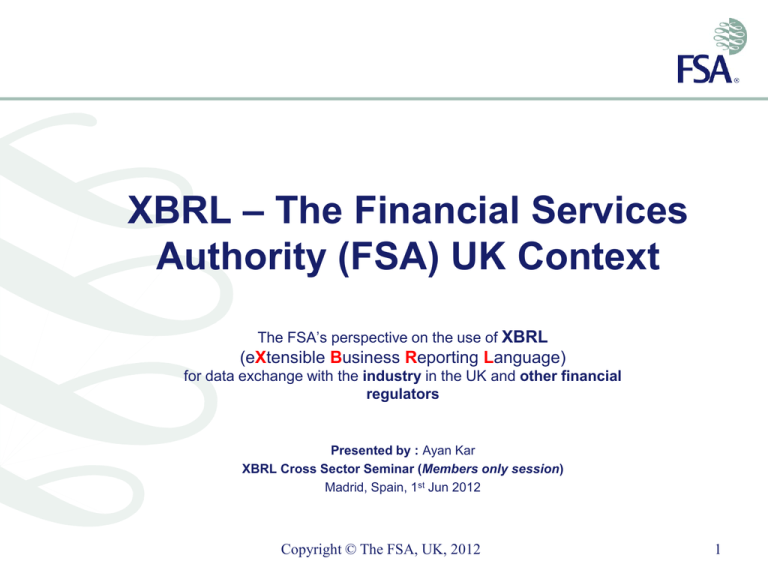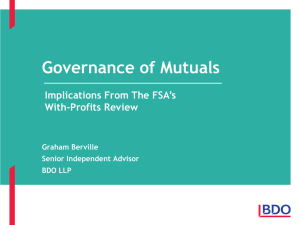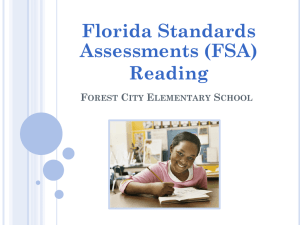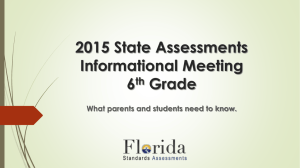XBRL - The FSA Context
advertisement

XBRL – The Financial Services Authority (FSA) UK Context The FSA’s perspective on the use of XBRL (eXtensible Business Reporting Language) for data exchange with the industry in the UK and other financial regulators Presented by : Ayan Kar XBRL Cross Sector Seminar (Members only session) Madrid, Spain, 1st Jun 2012 Copyright © The FSA, UK, 2012 1 Agenda 1. The FSA’s scope of regulation 2. Data exchange methods 3. The historical background of XBRL in the FSA 3. Regulatory reform in the UK 4. Potential benefits FSA Unrestricted 3 1. About the FSA “The Financial Services Authority (FSA) is a non-governmental body with statutory powers given to it by the Financial Services and Markets Act 2000.” (Source www.fsa.gov.uk) • Key characteristics: – Independent body that receives all its funding through a levy on the financial services industry – Accountable to H.M. Treasury and, through them, Parliament • Statutory objectives: – Market confidence – Financial stability – Consumer protection – Reduction of financial crime • Scope includes: – Any firm or individual that carries out a regulated financial service market activity in the UK must be authorised by us, unless they are exempt. – This includes over 27000 entities spanning across major financial organisations, small firms and independent financial advisors • The regulatory reporting data: – Collected using proprietary XML standards and there over 80 data items collected by the FSA as specified in out handbook – Defined for the firms depending on its size and permissions granted to it FSA Unrestricted 4 1.1. Our scope – who do we regulate? We regulate more than 27000 entities within the UK that span different business types and are subject to different aspects of regulation. One of our key challenges lie in managing diversity of regulatory policies & the population. Breakdown by Legal Status Breakdown by business types Breakdown by Entities allowed to hold Client Assets (CASS) Firms in scope for MIFID ϕ Markets Conduct Regulation Circa 10% of Firms are subject to Prudential Standards for Banking, Investment Firms & Building Societies ϕϕ ϕϕ ϕ FSA Unrestricted Copyright © The FSA, UK, 2012 Firms most impacted by EBA and EIOPA directives Firms mostly impacted by ESMA directives 5 2. Data exchange methods Deposit Takers Investment Managers Services (UK) of an Overseas Firm Advising, Arranging & Dealing as agent FSA Unrestricted Others Solvency I (circa. 650 firms) Insurance Firms CRD & CRR (circa. 2800 firms) Open-ended investment company (OEIC) MIFID (circa 4600 firms) Not Specified Prudential & Business Conduct (Financial Services & Markets Act 2000) The FSA Regulated Entities (Defined by FSMA 2000) The existing data exchange arrangements are based on the Integrated Reporting Standards that were adopted in 2006, these are based on proprietary XML standards developed by the FSA. UK Regulatory Architecture (Internal Twin Peaks Apr 2012) FSA (Financial Services Authority) European Insurance & Occupational Pensions Authority (EIOPA) European Banking Authority (EBA) Prudential Business Unit (PBU) European Securities & Markets Authority (ESMA) Conduct Business Unit (CBU) UK Regulatory Bodies H.M. Treasury Bank of England HMRC Copyright © The FSA, UK, 2012 6 3. Historical background of XBRL in the FSA We decide what data to collect and how to collect it based on the following criteria, these activities span multiple years: • Amendment of the Handbook rules through a Legal process, Cost Benefit analysis and Public consultation • Policy driven initiatives like, Integrated Regulatory Reporting, Liquidity, Solvency II and Capital Requirements Directive by the EU 2002 2003 XBRL consultation formally launched through, • Consultation on Integrated Regulatory reporting – a new integrated approach • 1869 CP197 Regulatory reporting (Consultation paper) New Regulatory Reporting environment for the FSA (DP12) is published 2004 2005 CBA on XBRL explained key aspects being considered included cost to Firms and maturity of standards, • David Kenmir’s speech to Complitech. 2006 The FSA embarks on the adoption of Integrated Regulatory Reporting (IRR) based on XML and rolls out GABRIEL (Gathering Better Regulatory Information ELectronically) We explain our intention to use XBRL for MLAR and RMAR returns, mentioned in, XBRL statement on use published by the FSA, decides not to adopt XBRL due to, • PS04/9: Reporting requirements – Feedback on CP197 • Integrated Reporting update, reiterates need for XBRL standards. • Lack of XBRL experience in UK and hence the reluctance of the firms in adopting XBRL. • No other regulatory body had adopted this as a standard and hence the benefit of cross border standardisation was low. FSA Unrestricted 2007 2008 2009 2010 2011 EBA strongly recommends the use of XBRL for COREP and FINREP (COREP minutes on FSA website) Use of custom XML reiterated, however the review notes the increase use of XBRL provided in the IRR update statement. 2013 2012 FSA to publish its interim position on adoption of XBRL that is likely to, • Explain the scope to be limited to CRD IV & SII • Interim position subject to Reg Reform based changes in 2013 EIOPA announces that it will use XBRL for reporting and asks for feedback to its technical consultation (EIOPA Legal cutover to the new regulatory architecture for UK announcement) (All updates sourced from www.fsa.gov.uk) 7 4. Regulatory reform in UK Financial markets have changed in the ten years since our inception. The Government has decided that in today’s market it is appropriate for the prudential supervision of banks and insurance companies to be carried out separately from work to protect consumers and regulate markets. The Government has therefore decided that the FSA will be divided and its activities split between two new regulators. New revised distribution of firms The new Prudential Regulation Authority (PRA), a subsidiary of the Bank of England, will be responsible for ensuring our financial system is stable. It will supervise the ‘safety and soundness’ of around 2,000 firms. The new Financial Conduct Authority (FCA) will focus on getting a fair deal for consumers. It will regulate the conduct – the way a firm behaves and interacts with its customers – of some 27,000 firms, as well as the prudential supervision of around 24,500 firms. FSA Unrestricted 8 4.1. Impact on data exchange Services (UK) of an Overseas Firm Insurance Firms Deposit Takers Others Professional Entities Insurance Not Specified Open-ended investment company (OEIC) Investment Managers Services (UK) of an Overseas Firm Advising, Arranging & Dealing as agent Solvency II (circa. 650 firms) Insurance Prudential non-CRD Submission to PRA Advising, Arranging & Dealing as agent CRD IV (circa. 2800 firms) Banking MIFID (circa 4600 firms) Branch (UK) of a Overseas Firm Consumer Conduct & Prudential Submissions (Financial Services Bill 2012) FCA Regulated PRA / Dual Regulated Data exchange arrangements post regulatory reform, CRD IV & SII implementation are likely to get more complex. UK Regulatory Architecture (post legal cutover Mar 2013) Prudential Regulatory Authority (PRA) Data Sharing Financial Conduct Authority (FCA) European Banking Authority (EBA) European Securities & Markets Authority (ESMA) UK Regulatory Bodies H.M. Treasury Bank of England HMRC Others FSA Unrestricted European Insurance & Occupational Pensions Authority (EIOPA) Copyright © The FSA, UK, 2012 9 5. Potential benefits EU Regulatory Bodies • Consistent Terminologies • Reduced risk of misinterpretation • Re-use across NSAs The FSA • Faster time to implementation (since EU conducts the CBA) • Consistency across industry sectors (specifically for overseas branches operating in UK) • Reduced complexity of implementation across sectors UK Regulated Firms • Implement once and re-use for other NSAs • Common language across geographies • A clear roadmap for changes FSA Unrestricted 10








